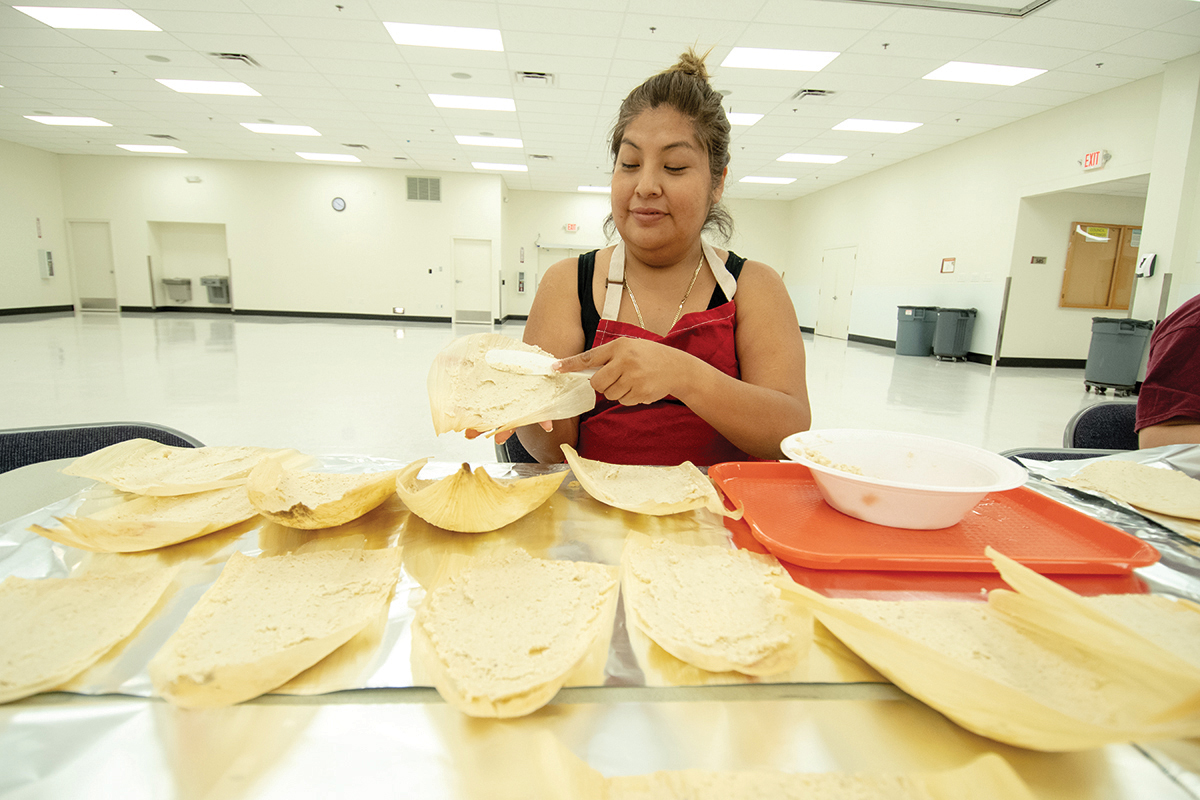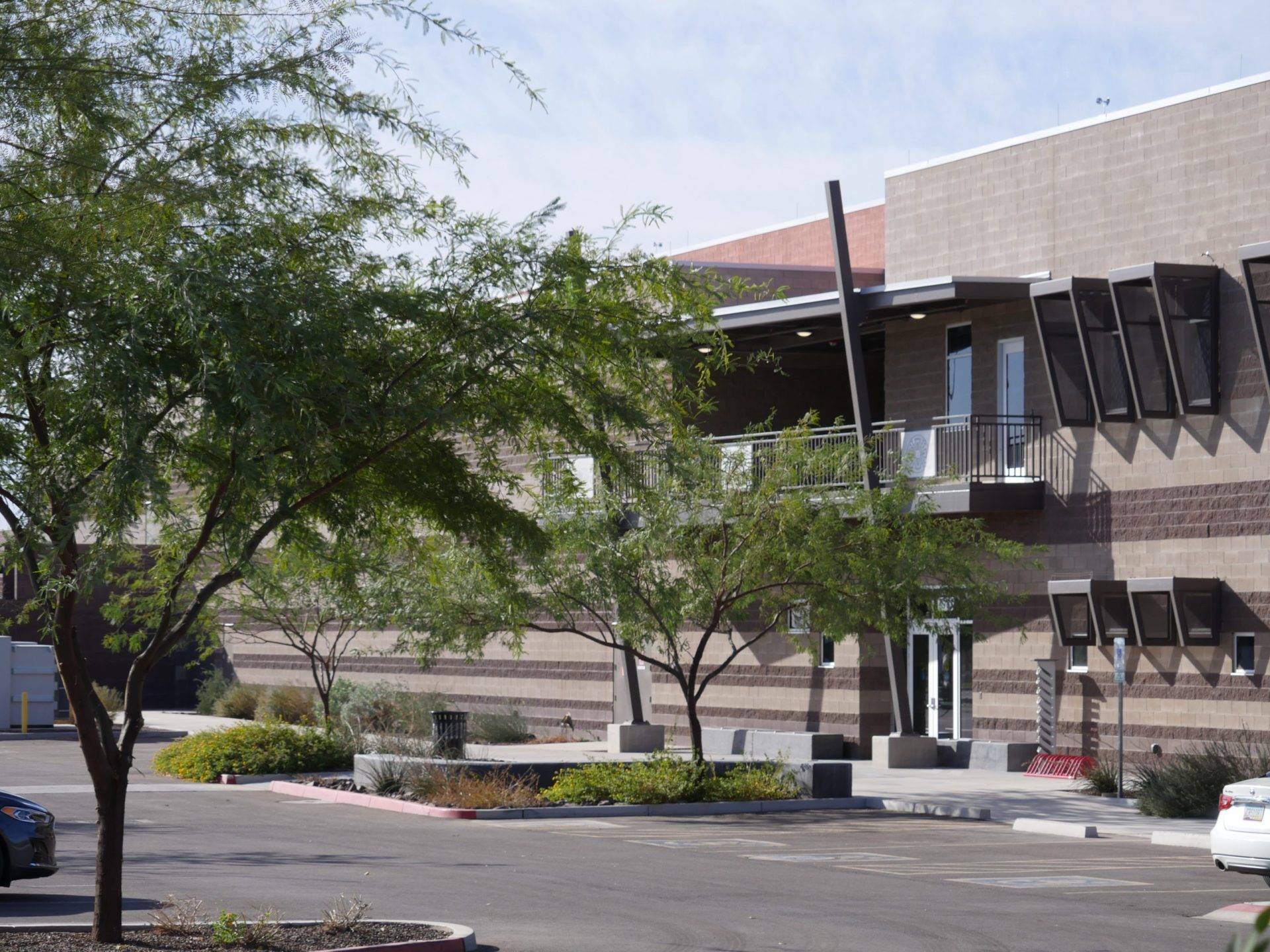VIEWS: 1553
September 15, 2022Huhugam Ki: Museum Holds Second Tamale-Making Class
The Huhugam Ki: Museum held its second tamale-making class on Saturday, August 27, at the Salt River Community Building. Eight participants ages 16 and older learned how to make masa, prepare chili filling and steam tamales.
Tamales are a traditional Mexican dish often served during the Christmas season. Each tamale is made of masa (corn dough) that is filled with meat, wrapped in a corn husk and steamed. Over the centuries, tamales have migrated into the O’odham and Piipaash culture.
The museum is planning a tamale party in December, according to manager Gary Owens, and it’s always a fun and festive event. The class not only provided education in tamale-making, it also allowed the museum to check out the new kitchen in the Community Building as a venue for the party.

“When we did our last tamale party in 2019, we had about 60 guests. We had people spreading the masa outside on tables, so we thought for the next classes and tamale party we would move to a bigger venue. Since they did renovations on the Community Building kitchen, we’re here checking it out and making sure we are able to work with it, and we are,” said Owens.
For the class, participants were required to bring their own precooked chuck roast or rotisserie chicken for the tamale filling. Salt River Pima-Maricopa Indian Community member and cook Cecilia “Tweety” Antone and her daughter Angela Correa taught the class, moving through the tamale-making process step by step.
First, presoak the corn husks in warm water to soften them up so they can be wrapped around the tamales. Prepare the husks in advance and dry them.

Making tamales begins with cooking the meat, which also can be done in advance. Next is making the masa dough. You can buy masa flour at any grocery store; check in the Mexican food section or the flour aisle.
Tweety demonstrated two ways of preparing the masa. For the first, she used one bag of masa and two blocks of Snow Cap brand lard, which was melted and added to the masa. She also used a gallon of water and a tablespoon each of salt (you can use as much salt as you want) and baking powder. For the second option, she used one bag of masa and one block of lard, but she also added some juice from the cooked tamale meat. In this version she used two cups of water and a tablespoon each of salt and baking powder.
Moving on to the precooked tamale meat, it was put back on the stove and Baca’s brand red or green chile was added. It’s your personal preference as to whether you want to add red chile, green chile or cheese to the meat filling in your tamales.

Once your meat mixture and masa dough are ready, you can start assembling your tamales.
Take a corn husk and spread some masa dough on it (the husk has two sides, one that is smoother than the other; spread the masa on the smooth side). After you’ve put masa on all the husks, then you’re ready to add the meat filling. Fill each with some meat, roll and fold, and then add another layer. You can just do one layer or five—it’s up to you.
The final stage is steaming the tamales. Tweety recommends using a pot with a lid that will hold in steam. She placed some crumpled aluminum foil in coils around the bottom of the large pot to keep the tamales off the bottom; she then placed the tamales inside, on top of the foil, and covered them with water to just below the top of the foil. Cover the tamales with a damp hand towel and a sheet of foil on top, put the lid on, let the water come to a boil and then turn the heat down to medium and cook for about an hour. And enjoy!

“It’s my first time [making tamales] by myself, without my mother-in-law,” said Georgia Acosta. “I have never seen the process of making the tamales; she usually does all of the prep work and we just show up and help assemble them.”
Janessa Thomas recalled that making tamales is a long process. She has never made tamales with her mother but remembers making them with her grandpa.
“He would have an assembly line for us; he just made all the meat and then we would do everything else,” said Thomas. “He would tell us if we were doing it wrong; he would just say, ‘Nope, you’re doing it wrong. Start over.’”
The tamale classes are quite popular. “For future classes, continue to check the Museum site. Keep trying to get in, because they fill up fast. Those who have taken previous classes, please give other people a chance. If you ever need any help, call the staff or instructors,” said Owens.
Stay updated on all Huhugam Ki: Museum and Cultural Resources Department classes and events on Facebook and Instagram at saltrivercrd or www.srpmic-nsn.gov/government/culturalresources/hhkm/








